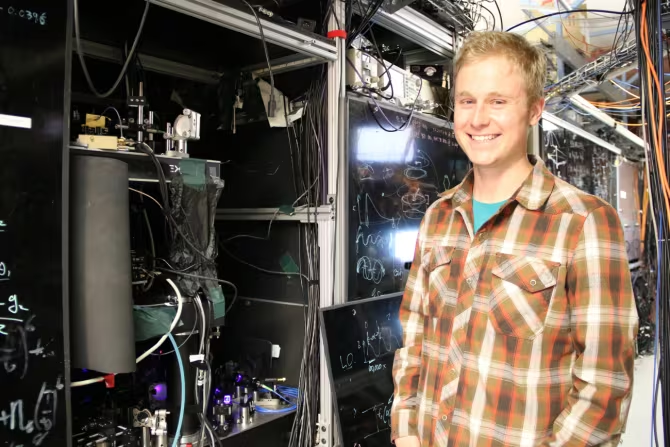On June 12, 2024, researchers at the U.S. National Institute of Standards and Technology (NIST) announced a breakthrough in timekeeping technology with the unveiling of the NIST-F2 atomic clock. This new clock boasts an unprecedented level of accuracy, surpassing all previous atomic clocks in its stability and ability to measure time. The NIST-F2 represents a significant leap forward in the field of accurate time measurement, with implications for scientific research, navigation systems and even our understanding of the universe.

The Importance of the Atomic Clock: Beyond Telling Time
While atomic clocks may seem like sophisticated tools solely for telling time with extreme precision, their applications extend far beyond the traditional watch face. These incredibly accurate timekeepers play a vital role in a variety of scientific endeavors and technological infrastructure. Here are some key areas where atomic clocks are crucial:
- Global Navigation Satellite Systems (GNSS): Modern navigation systems such as GPS rely on incredibly accurate timing signals from atomic clocks to determine the location of a receiver. The improved accuracy of NIST-F2 will potentially improve the accuracy and reliability of GNSS, leading to more accurate positioning data.
- Fundamental Physics Research: Atomic clocks are instrumental in testing fundamental theories in physics, such as Einstein’s theory of relativity. Their ability to measure time intervals with such incredible precision allows scientists to detect small anomalies and discrepancies, which could lead to revolutionary discoveries.
- Financial Transactions: High-frequency trading in financial markets relies on synchronized timekeeping for accurate transaction timestamps. The improved stability of NIST-F2 will contribute to even more accurate timing in the financial sector.
- Telecommunications: Synchronization of telecommunications networks over long distances depends on highly accurate timing signals. The accuracy of NIST-F2 can potentially improve network stability and efficiency.
Learn about the new Apple Watch in this article.

How does NIST-F2 work?
Unlike traditional clocks that rely on the motion of a pendulum or the vibrations of a quartz crystal, atomic clocks use the natural vibrational frequency of atoms to define a second. The NIST-F2 uses ytterbium atoms, trapped in a field of laser light and cooled to incredibly low temperatures. These cold atoms vibrate at a remarkably stable frequency, providing an accurate reference for measuring time.
What Makes NIST-F2 Special?
The NIST-F2 features several advances that contribute to its unparalleled accuracy. A key innovation is the use of a sophisticated laser system that manipulates the ytterbium atoms, minimizing external influences that could affect their stability. In addition, the design incorporates novel techniques to cancel ambient noise and minimize measurement errors. As a result, the NIST-F2 is estimated to lose only one second every 300 billion years, a staggering level of accuracy compared to previous atomic clocks.
The Future of Time Measurement: Beyond Accuracy
The development of NIST-F2 is not just about achieving ever-increasing accuracy. Scientists are also exploring ways to leverage these incredibly stable atomic clocks to establish a global time reference that is even more robust and reliable. This could involve creating constellations of interconnected atomic clocks, ensuring redundancy and even greater stability in the global timing infrastructure.

Ethical Considerations: Timekeeping and Relativity
The extreme precision of NIST-F2 also raises some fascinating ethical questions. Einstein’s theory of relativity teaches us that time is not absolute; it can be influenced by gravity and motion. As our timing becomes more precise, the question arises as to whether we should adjust our definition of a second to account for these relativistic effects. This is a complex debate with philosophical and scientific implications that will likely continue as timing technology advances.
A New Era for Time Measurement
The NIST-F2 atomic clock represents a significant milestone in the science of timekeeping. Its unprecedented accuracy opens doors to new scientific discoveries, enhances existing technologies, and pushes the boundaries of our understanding of time itself. As we move forward, NIST-F2 and its successors will undoubtedly play a pivotal role in shaping the future of time measurement and its impact on diverse scientific and technological fields.
